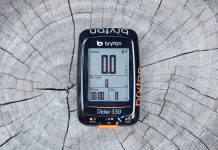In response to questions over the effectiveness of it’s magnetic resistance testing of bikes for mechanical doping the UCI invited media to its headquarters in Aigle, Switzerland, to demonstrate the magnetic resistance detection method and why it was chosen over thermal imaging and x-ray technology.
Questions over the effectiveness of the UCI’s use of the iPad based magnetic resistance testing were raised in mid April by French television program Stade 2 where they used thermal imaging cameras to show heat generated by seat tube mounted motors in bikes. The footage wasn’t from racing though it was from a staged shoot but there was an implication from the programs roadside use of thermal imaging cameras at the Strade Bianche and the Coppi e Bartali races that pro riders were using motors. This wasn’t proven at all in the footage.
Later in April Greg Lenco from sudinfo.be took a thermal imaging camera to Liege-Bastogne-Liege where they found no evidence at all of motor use.
With all the speculation and strong likelihood that more journalists would use their own thermal imaging cameras at the Giro d’Italia and Tour de France the UCI has got on the front foot to explain the magnetic resistance testing that’s already been responsible for catching Femke Van den Driessche with a hidden motor at the 2016 UCI Cyclo-cross World Championships.
UCI Bike Checks for Mechanical Doping Explained

UCI Predident Brian Cookson and UCI Technical Manager Mark Barfield explained that the UCI had look at the alternatives like thermal imaging cameras, ultrasonic and x-ray but chose magnetic resistance technology.
We looked at ultrasonic, we looked at x-ray and we also looked at thermal imaging. Thermal imaging only works when the motor is in use or has just been used and therefore it’s still warm. That makes pre and post race checks ineffective. So for instance in the case we discovered in cyclocross we wouldn’t have been able to find the motor by thermal imaging as the motor was not running when the check was made.
Thermal imaging will also pick up heat from other sources like riders bodies, bearing friction and heat from warm tires as seen in the Strade 2 video.
X-ray technology was discounted because the testing needs to be highly portable due to the nature of stage racing and x-ray didn’t fit that requirement. X-ray scanners would also have to meet different legislation in different jurisdictions and the test on each bike would be time consuming.
Is the UCI confident with it’s magnetic resistance testing?
100% states Mark Barfield, adding that the magnetic resistance testing will show hidden motors and any other method that will contribute to powered assistance. The scanner creates a structured magnetic field and the iPad will then detect any interruptions to that magnetic field like a motor, magnet or battery that could be concealed within the bike frame.
With thousands of tests due to be carried out at the Giro d’Italia and the Tour de France and testing backed up by severe sanctions, Mark Barfield states
You would have to be made to try and cheat in this way
That’s not something I would disagree with once you add in the risk of journalists and police doing their own tests during the Tour de France.

















